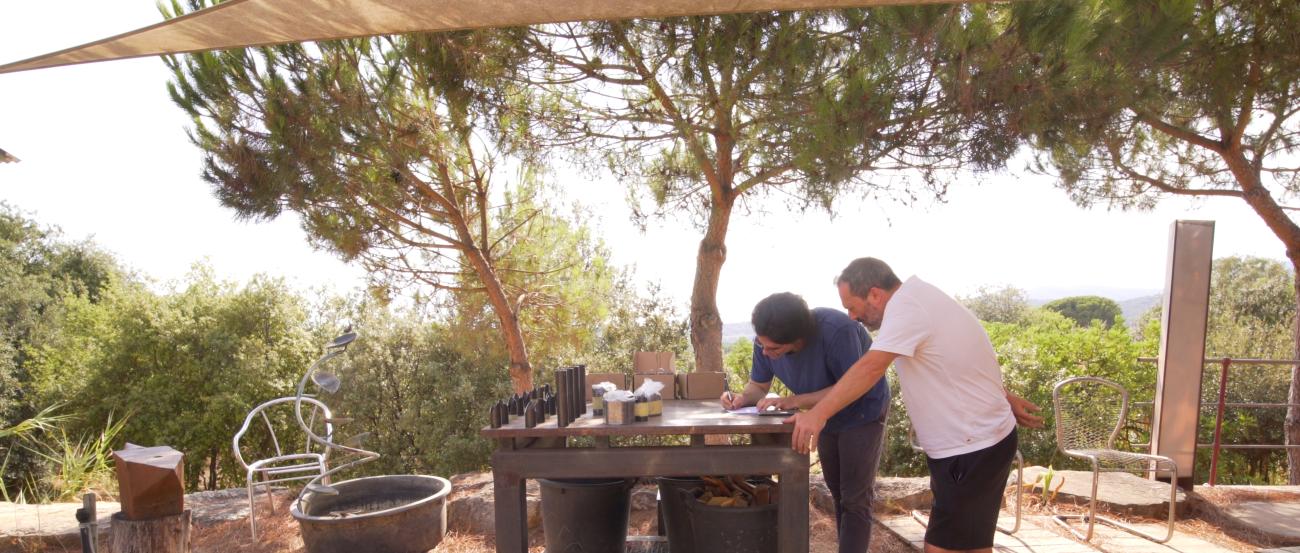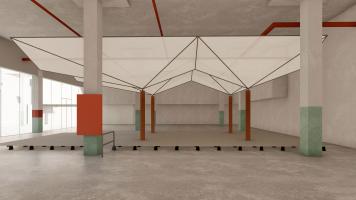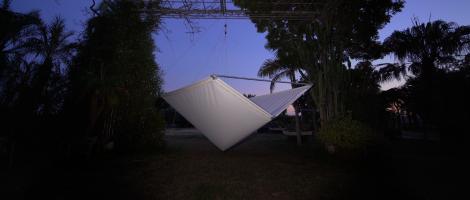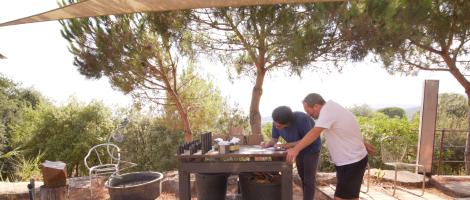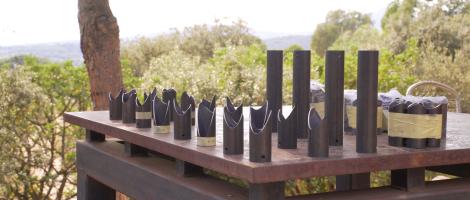Join the Rice Design Alliance for a a guided tour of Juan José Castellón's Building Ecologies exhibition.
Building Ecologies proposes new models of urban infrastructures and collective spaces for social interaction based on the integration of multiple architectural, technological, and ecological systems. Accordingly, this intervention is the result of a collaborative and interdisciplinary research model at Rice University involving the School of Architecture, the Department of Civil and Environmental Engineering, and the Shepherd School of Music, as well as the support of the Carbon Hub initiative.
The exhibited modular installation lends itself to operating as a prototypical flexible module that is able to be deployed onto any pre-existing urban rooftop or public area. The modular system is fundamentally comprised of post-tensioned hollow ceramic pieces acting as structural columns and water collectors, a modular ceramic floor system elevated on pedestals, and a water collector membrane system—a light-weight tensile membrane structure—that captures and cleans rainwater through its expansive surface, carries it through the hollow ceramic columns, from which it is diverted to pipes below the ceramic floor for irrigation purposes. The water management system generated by the proposal would work to alleviate the effects of flooding and drought through storage as well as release and reduce runoff by capturing water and redirecting it into irrigation tanks. The materiality of the modular columns, with their high thermal inertia, also provides energy-saving cooling benefits. Finally, the system incorporates soil as an essential material, that serves to absorb water and grow food for the community. The resulting hybrid prototype integrates food, energy, and water infrastructures into a minimum loss and minimum waste circular system while helping to foster a sense of community and social interaction.




